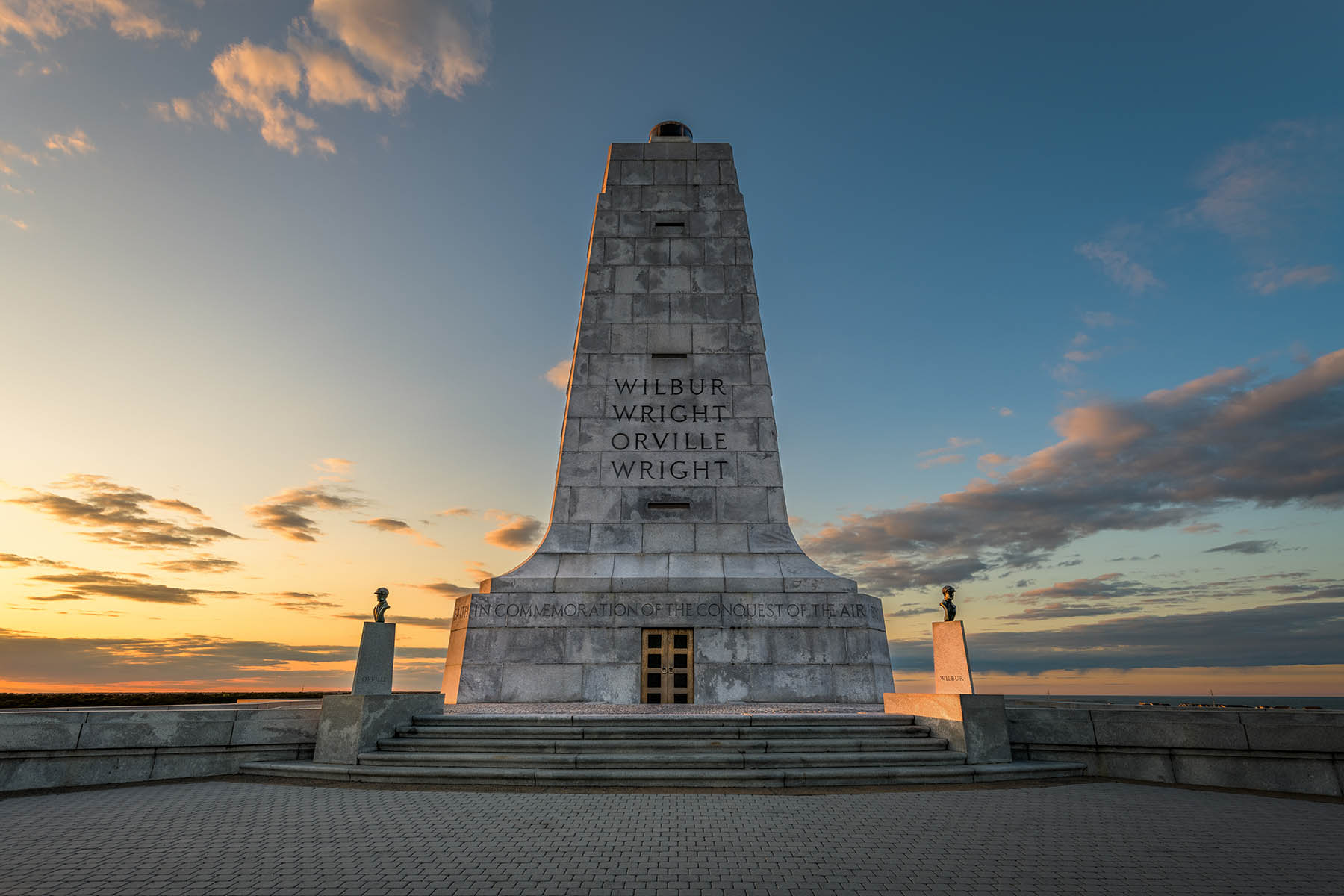Outer Banks national parks offer an inspiring blend of untouched natural landscapes, cultural landmarks, and coastal ecosystems. From rolling sand dunes and maritime forests to protected wildlife refuges, these parks and reserves give visitors the chance to see the Outer Banks at its most authentic and wild. Whether you’re interested in history, birdwatching, or outdoor adventures, there’s a national park experience waiting for you in the OBX.
This guide highlights the top national parks and nature reserves across the Outer Banks and what makes each one worth the visit.
Cape Hatteras National Seashore
Spanning more than 70 miles of pristine Atlantic coastline, Cape Hatteras National Seashore is the crown jewel of Outer Banks national parks. Stretching from Bodie Island to Ocracoke Island along NC Highway 12, this national seashore offers visitors the chance to experience untouched beaches, historic lighthouses, and incredible wildlife habitats.
Popular activities include beachcombing, shell hunting, fishing, and surfing. You’ll also find trails through marshland and maritime forests. Highlights include climbing the Cape Hatteras Lighthouse—the tallest brick lighthouse in North America—and walking the Bodie Island Lighthouse grounds. For history buffs, the Graveyard of the Atlantic provides a haunting reminder of the area’s shipwreck past.
Pea Island National Wildlife Refuge
Located just south of Oregon Inlet, Pea Island National Wildlife Refuge is a sanctuary for migratory birds, sea turtles, and other native wildlife. This reserve features salt marshes, freshwater ponds, dunes, and soundside beaches that support hundreds of species year-round.
The North Pond Wildlife Trail is an easy 1-mile loop with observation decks perfect for spotting herons, ibises, and other coastal birds. Bring your binoculars—this is one of the best birdwatching destinations in North Carolina. The visitor center often has volunteers available to answer questions and share wildlife sightings.
Jockey’s Ridge State Park
Jockey’s Ridge State Park, located in Nags Head, is home to the tallest sand dunes on the East Coast. The ever-shifting dune field creates a surreal landscape that draws photographers, families, and adventure-seekers alike. Climb the dunes for an unforgettable sunset or enjoy recreational activities like hang gliding and kite flying.
The park also includes the Soundside Nature Trail, a short, shaded loop through a maritime thicket that opens up to the Roanoke Sound. If you’re feeling adventurous, sandboarding and sand sledding are also permitted in designated areas. This park is a must-see for anyone who wants to experience the OBX from a new perspective—literally.
Fort Raleigh National Historic Site
Located on Roanoke Island in Manteo, Fort Raleigh National Historic Site tells the story of the first English settlement in the New World. It also preserves the cultural heritage of the Native American communities and freedmen who lived in the area. While the site is small in size, it offers an impressive mix of history, nature, and performance art.
Walk the interpretive trail through forested grounds, explore the visitor center exhibits, and tour the reconstructed earthwork fort. One of the most popular features is the nearby Waterside Theatre, home to the outdoor drama “The Lost Colony,” which has been performed here for decades. The adjacent Elizabethan Gardens, while separate from the national park, are also worth a visit.
Why visit Outer Banks national parks?
Each of these protected areas offers a different lens into what makes the Outer Banks unique. You’ll find solitude and reflection on quiet trails, family fun on wide sandy beaches, and insight into the early chapters of American history. The national parks and reserves also protect important habitats that support local wildlife and help preserve the fragile barrier island ecosystem.
Whether you’re hiking along elevated boardwalks or photographing historic lighthouses, the OBX national parks connect visitors with both the land and its stories. These are places where you can slow down, learn something new, and take in sweeping coastal views all at once.
Planning your visit
Most of the Outer Banks national parks and reserves are open year-round and free to visit, though some activities—like climbing lighthouses or attending performances—require separate fees or tickets. Restrooms, visitor centers, and picnic areas are available at most locations, but it’s best to check individual park websites for seasonal hours and alerts.
To get the most out of your visit, bring sunscreen, insect repellent, and plenty of water. Lightweight, breathable clothing and sturdy walking shoes are ideal, especially for dune hikes or nature trails. If you plan to visit multiple parks, consider building a weekend itinerary around a mix of natural and historical experiences.
Final thoughts on Outer Banks national parks and reserves
From sweeping dunes and peaceful wildlife sanctuaries to sites that preserve centuries-old stories, Outer Banks national parks are some of the region’s most rewarding destinations. They invite exploration, inspire wonder, and remind us of the fragile beauty that defines this stretch of North Carolina’s coastline.
For another way to enjoy OBX’s natural beauty, read Watching the Birds of the Outer Banks.

Share This Page